Here is Understanding Quantum technologies 2023, the 6th edition of this book and the third in English. As all my book, it is a free to download book without any questions. It beats another record of mine with 1,366 pages, split in three volumes for e-readers and a paperback edition available on many Amazon sites.
It is probably the most thorough book on the matter covering so many dimensions (history, science, technology, hardware/software, usages, societal, political) and for all quantum technologies (computing, telecommunications, cryptography, sensing, quantum matter). It is a very large book but it can also be considered as a collection of more reasonable books: one on quantum physics (140 pages), another on quantum computing hardware (344 pages), one on quantum computing programming, software tools and case studies (270 pages), yet another one on quantum communication and cryptography (94 pages), on quantum sensing (49 pages, we are here in the “novel” format), on quantum geopolitics (99 pages), a directory of quantum industry vendors (665 are described in the book), etc. But they are all tied together in a consistent manner!
ebook format
This book is directly downloadable as a PDF file with no required personal data, with an optional lighter version for a readers like Amazon Kindle. A paperback printed version is also available since October 22nd, 2023, on Amazon sites and like the two previous editions, I added it on arXiv on November 14th.
Here are the various PDF versions available for download. You’ll be better off downloading the relevant files just before your start reading it, the reason being that I plan to continuously update the document until January next year.
This book current version is 6.8, updated on May 9th, 2024 (the updates log is at the end of the single volume file or at the end of volume 3).
- A4 paper size version, an ISO standard used worldwide with the exception of the USA and Canada that are using Letter format, with 8.5×11 inches (215.9 x 279.4 mm). 1,366 pages, 100 MB, images in full resolution.
- Compressed A4 version split in three volumes fitting under 32 MB and designed for readers like Amazon Kindle with respectively 326, 528 and 544 pages and 15, 24 and 23 MB.
- Letter format version that shrinks the top/bottom margins, for USA/Canada, with images in full resolution, also 100 MB.
- Compressed Letter version in three volumes designed for readers like Amazon Kindle.
The page numbers of all these versions should be consistent. Let’s say for example that you can refer to page N in Letter Volume 3 and it will match page N in the A4 Volume 3 version. But the page numbers are not the same between the single and three volume versions. You can then print the file wherever you can, in your organization or through an online ebook printing service of your choice depending on your location.
I also updated the short version of the book of only 24 pages. It is an illustrated compilation of the “key takeways” from the end of each book’s parts.
Fun facts and book statistics
The book cover color can help you spot which edition it is. The 2021 edition was blue, the 2022 edition was green and this 2023 version is purple.
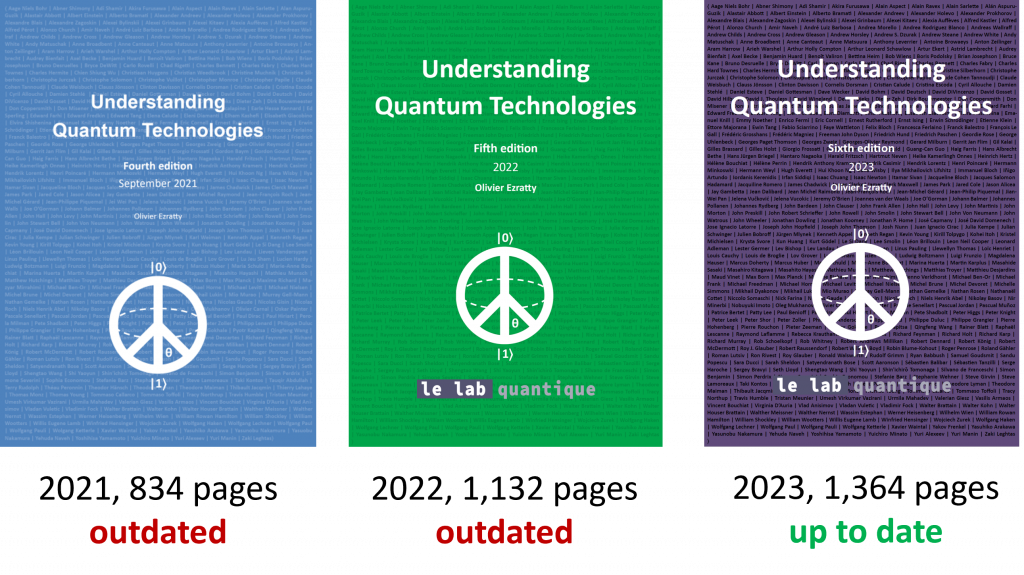
While quantum computing promise is to provide some exponential speedups to solve various computational problems, you’ll be happy to see that the growth in pagination of this book is only linear. It also demonstrates that its author is a human and not a machine, although I use a lot of various tools and tricks to improve my writing and editing productivity.
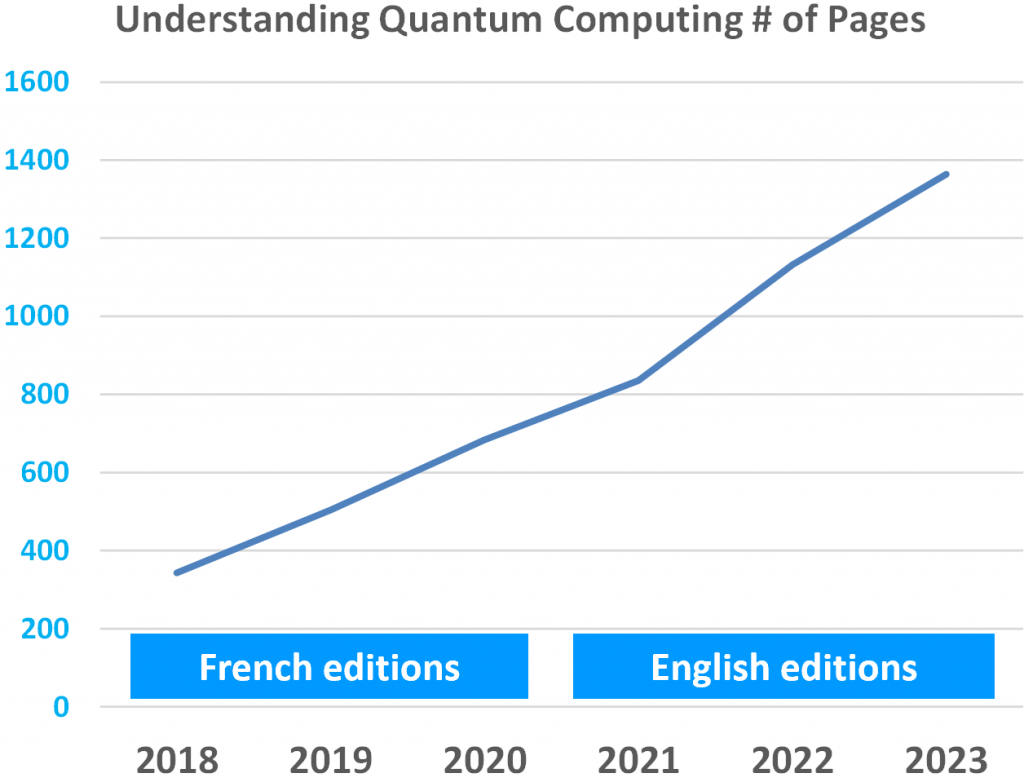
Other statistics on the book content:
- 992 annotated figures and custom schematics including 275 updated or new ones.
- 3,301 referenced scientific papers, totally 105,632 pages.
- 214 presentations are also referenced totaling 10,180 slides.
- 4,771 footnotes.
- A 434 terms glossary.
- Each part ends with a summary of about 7 key takeaways.
- The book contains over 526K words vs 440K words for the 2022 edition.
- It took me 6 months to produce this update, from April to September 2023.
- I wrote about 3,000 lines of Word VBA macros to improve my productivity in editing the book.
- Plus 160 lines of Python code to generate my qubit fidelities scatter plots.
And a split of referenced paper per publication year and with the additions from this 2023 edition, in red which gives you an indication on the “freshness” of its bibliography, 63% of the references being less than 3 years old.
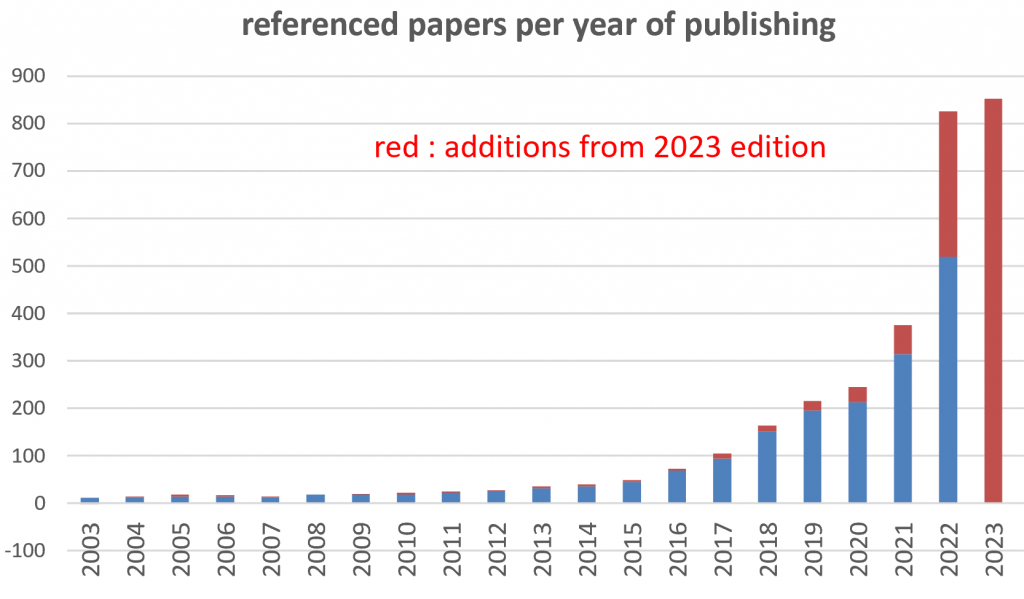
New features
Like all previous editions, this 6th edition is an update. All pages have been corrected and updated. Here are its key evolutions and new features:
- Why: rewrote much of this part, mainly the “Why quantum computing” section with a rearrangement of the section on Moore’s law and transistor density story. Added a one page table with common misconceptions and their explanation and location in the book.
- History and scientists: added Immanuel Bloch in quantum physicists. Sorted the hall of fame into subcategories. Rewrote and completed the Research for dummies part, adding my own experience on publishing a scientific paper in a peer-reviewed journal, and about using ChatGPT.
- Quantum physics 101: added some explanation of the quantum nature of continuous quantum variable systems, added measurement techniques of nuclear spin, added the first quantum battery vendor, Planckian in the quantum matter section, reorganized the part on superconductivity and added news about the so-called LK99 ambient temperature/pressure superconductor that made the news during Summer 2023.
- Gate-based quantum computing: various minor corrections on linear algebra mathematics. Added a space vs time advantage comparison. Updated some illustrations.
- Quantum computing engineering: many updates and new illustrations in the quantum error correction and quantum error mitigation part, many additions and updates in the energetics and economics part.
- Quantum computing hardware: updates on qubit figures of merit, many updates for major superconducting vendors (IBM, Google, …), added ARQUE and SemiQon and QSi in silicon qubit vendors, added neQxt, Quantum Art and Qudora Technologies in trapped ions qubit vendors, NanoQT, GDQLABS and QUANTier in neutral atoms qubit vendors, Quantum Transistor and SaxonQ in vacancies qubits, Quanfluence and Rotonium in photonic qubits. Added a part on how Majorana qubits operate.
- Quantum enabling technologies: added Zero Point Cryogenics and Ulvac Cryogenics in cryostats vendors. Added Ohtama, QuEL and T0.Technology in electronics vendors and Onnes Technologies in fabs/characterization vendors. Added ConScience in foundries.
- Quantum algorithms: arithmetic part of Shor’s algorithm, PDEs (partial differential equations), added VQLS and QSVD in NISQ algorithms, added a long part on NISQ algorithms, new part on algorithms hybridization. Better explanations on complexity classes.
- Quantum software development tools: new parts on abstraction levels, code factoring, securing quantum computing, and resource estimators. Clarifications on the difference between emulations and simulations.
- Quantum business applications: added a framework to assess quantum computing case studies, added a part on climate change, rewrote many parts particularly on healthcare, chemistry/energy, including a detailed overview of the famous FeMoCo case study, and finance applications. Added Beyond Limit, BlueQubit, First Quantum, Haiqu, Kunfeng Quantum Technology, InstaDeep, MolKet, Qbrain, QCentroid, QPerfect, Qruise, QSIMPLUS, Quantagonia, QAR-lab and Qausal.ai in the software and tools vendors list. Added Applied Quantum Computing, AngelQ, QuantumBCS, Qdeeptech and Reply Sigma in the IT service vendors list.
- Unconventional computing: rewrote many parts, restructured the optical computing part. Added Quantum Silicon Inc in the classical computing space.
- Quantum telecommunications and cryptography: changed some schematics and added some new ones, added a small part on quantum computing cryptography, added descriptions for Temporal entanglement, Quantum Secure Direct Communication, Quantum Pseudotelepathy, Quantum Conference Key Agreement, added a part on PQC and blockchain, added Alea Quantum Technologies in QRNG vendors. Added vendors in QKD/PQC: CAS QuantumNet, Craft Prospect, Quantum Bridge, levelQuantum, Wisekey, Seal SQ, Xiphera, Cryptolab, HEaaN CryptoLab, CyferAll, Icarus Quantum, LQUOM, QTI, Qtlabs and Q-Bird. Added MemQ and PhotonicsQ in interconnect vendors. Added BTQ Technologies and ChainMakers in vendors.
- Quantum sensing: extension and news schemas about sensing taxonomy and measurement precision, added Delta G, Euqlid, GLOphotonics and Guoyao Quantum Radar Technology in vendors.
- Quantum technologies around the world: added a part on patents, added Brazil, Pakistan and South Africa. Many updates on most other countries and related charts. Country map for Germany. Market maps for Canada and China.
- Quantum technologies and society: minor updates, particularly on the quantum hype phenomenon.
- Quantum fake sciences: minor updates.
- Resources: a couple additions in events and books.
- Glossary: added antisymmetry, Born-Oppenheimer approximation, chip, chipset, chiplet, contextuality, dark state, dark state protocols, dressed state, Fermi-Hubbard model, Gate teleportation, Gurobi, HPC, Lamb-Dicke regime, Lie groups, non-selective measurement, postselection, prepare-and-measure, QAOA, Quantum Conference Key Agreement (QCKA), Quantum Fisher Information, Quantum jump, Quantum Speed Limit, Quantum trajectory, Tabu Search, TDSE, TeraQuop, Trotterization.
Uniqueness
If you discover this book for the first time, here is how it is different from most books on quantum technologies and quantum computing since its inception.
- It provides a 360° approach of quantum technologies encompassing all dimensions: history, science, technology, engineering, economy, geopolitics and societal impact.
- It starts with an extensive review of quantum physics history and its key contributors.
- It contains some quantum physics 101 scientific content with rarely covered aspects like quantum matter.
- It extensively covers quantum engineering and enabling technologies in an unique way with a lot of details on cryogeny, control electronics, cabling and lasers.
- You will learn a lot about the various qubit types around with their strengths and weaknesses.
- It studies quantum computing scalability challenges, particularly with its energetic dimension.
- It investigates the raw materials used in quantum technologies, their origin, scarcity and environmental impact and even manufacturing techniques of semiconductors used in quantum technologies.
- It looks at the great variety of quantum algorithms and their usefulness, including their potential real speedups. It includes details on how data is loaded in a quantum program and their results exploited. It also describes how quantum computers are deployed in the cloud.
- It describes the offering from over worldwide 665 vendors in computing, telecommunications, cryptography, sensing and enabling technologies (+111 vs 2022).
- It contains a lot of fact checking on vendors and scientists claims whenever possible, like on quantum advantages and supremacies.
- It also covers quantum telecommunications, cryptography and sensing.
- I even dig into the unconventional computing domain that sits in between classical and quantum computing and could somehow compete with both.
- It deals with quantum technologies geopolitical and societal aspects, including quantum strategies from 34 countries, quantum foundations and the philosophical debates on quantum physics realism, on the emerging debate on quantum technologies ethics and on gender imbalance in this new field.
- It contains a unique part on quantum fake sciences including quantum medicine, positioned at the end of the book to avoid the Streisand effect. This part also contains a “fake fake-science” part on quantum management which is not serious at all.
Audience
This ebook target audience is broad and obviously, I cannot decide who can or cannot read it. Some parts are accessible to non-scientific readers, particularly the geopolitics and societal parts at its end. Other parts require some scientific background at the licence or master level. Reading the many referenced scientific papers requires at least a master level, if not a PhD.
The first target audience are computer science and information technology specialists and software developers who want to understand the whereabouts of quantum computing hardware, software and use cases. It is also made for students and active professionals who are attracted by quantum technologies and would like to know where they could develop some skills and shape their new job or even businesses.
At last, it is also interesting for most quantum researchers, engineers and entrepreneurs since most of them are specialized in a narrow field while this book provides an up-to-date 360° view on all quantum technologies. Covering all of this is nearly a full-time-job and a regular quantum physics or technology specialist don’t have the time to follow the related continuous scientific news cycle.
Business model
Most people are shy to ask me: but how do you make a living out of all your work? What is your business model?
I have published tens of free books like this since 2006. I favor distribution over revenue and open science. I benefited from it when searching for scientific data. Otherwise, I sell my time in a rather traditional way with speaking, teaching, training and various consulting missions. Another way to describe my business model is I give away the long version and sell the short one. Since with businesses, time is money and students have time but no money, all things go round. And this is particularly true with quantum technologies. But I hate being asked to “explain quantum computing in 30 minutes”. It is way too short.
Reviewers
This book and its previous editions benefited from the help of several scientists and entrepreneurs who proofread the document, mostly on specific parts. As the book size grows, it is a huge challenge to get some time from scientists to review such a book. They are short on time!
Help for crafting this 6th edition came from Vincent Pinte-Deregnaucourt (research consultant), Jeremy Stevens and Cécile M. Perrault (Alice&Bob), Neil Abroug (SGPI), Philippe Grangier (IOGS), ChatGPT (always available, but trust is optional), Ekaterina Alekseeva (Eurodecision), Marie-Elisabeth Campo (Air & Space Force, France Minister of the Armed Forces), Jonas Landman (LIP6, QC Ware), Nicolas Delfosse and Vivien Londe (Microsoft), Yves Colombe (Infineon) and Cornelius Hempel (PSI/ETH Zurich).
And a special thank to Michel Kurek (Multiverse) who carefully reviewed several times the whole book as with many previous editions and Christophe Jurczak (Quantonation) for his foreword. This book is also supported by le Lab Quantique (not financially, but for its visibility).
You can also send me feedback, corrections and suggestions. Yes, please! I update the book content whenever required until the end of the year.
Cheers!
Olivier Ezratty
September-November 2023
![]()
![]()
![]()
Reçevez par email les alertes de parution de nouveaux articles :
![]()
![]()
![]()


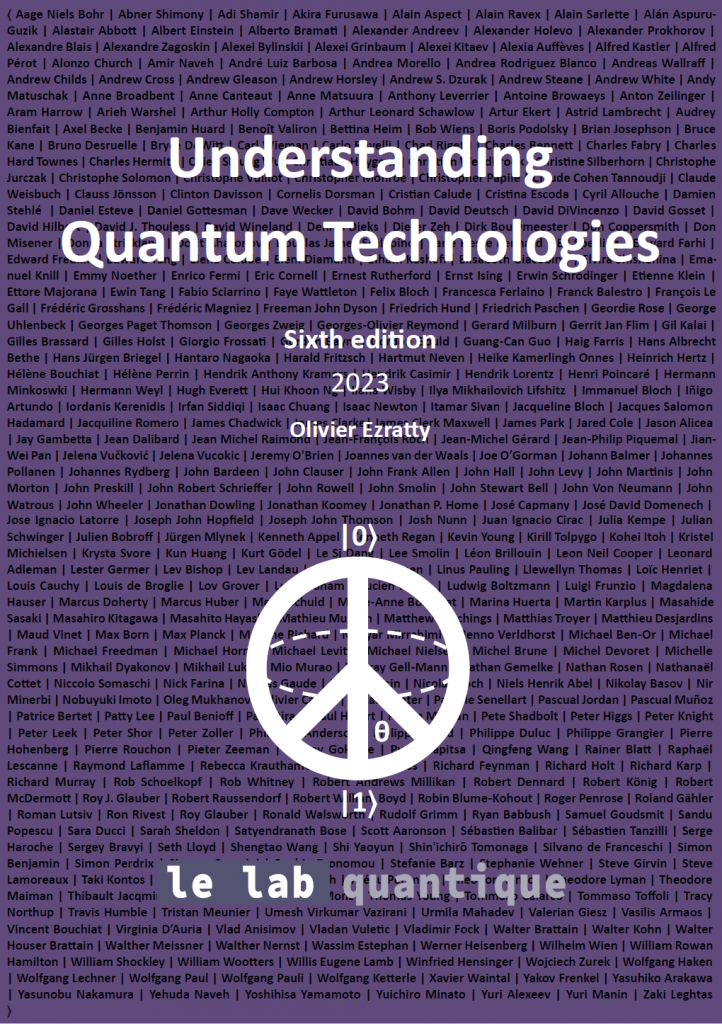
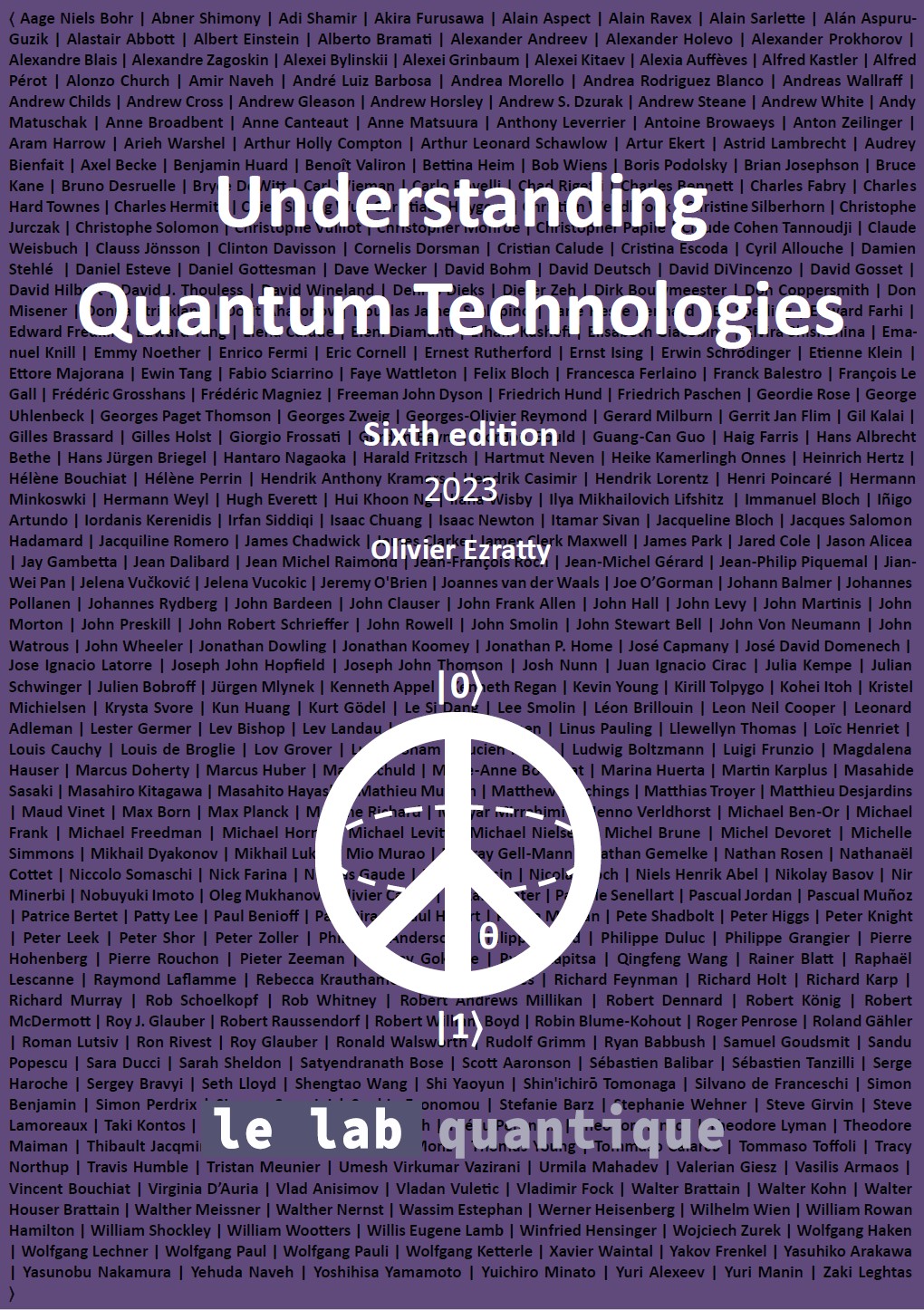
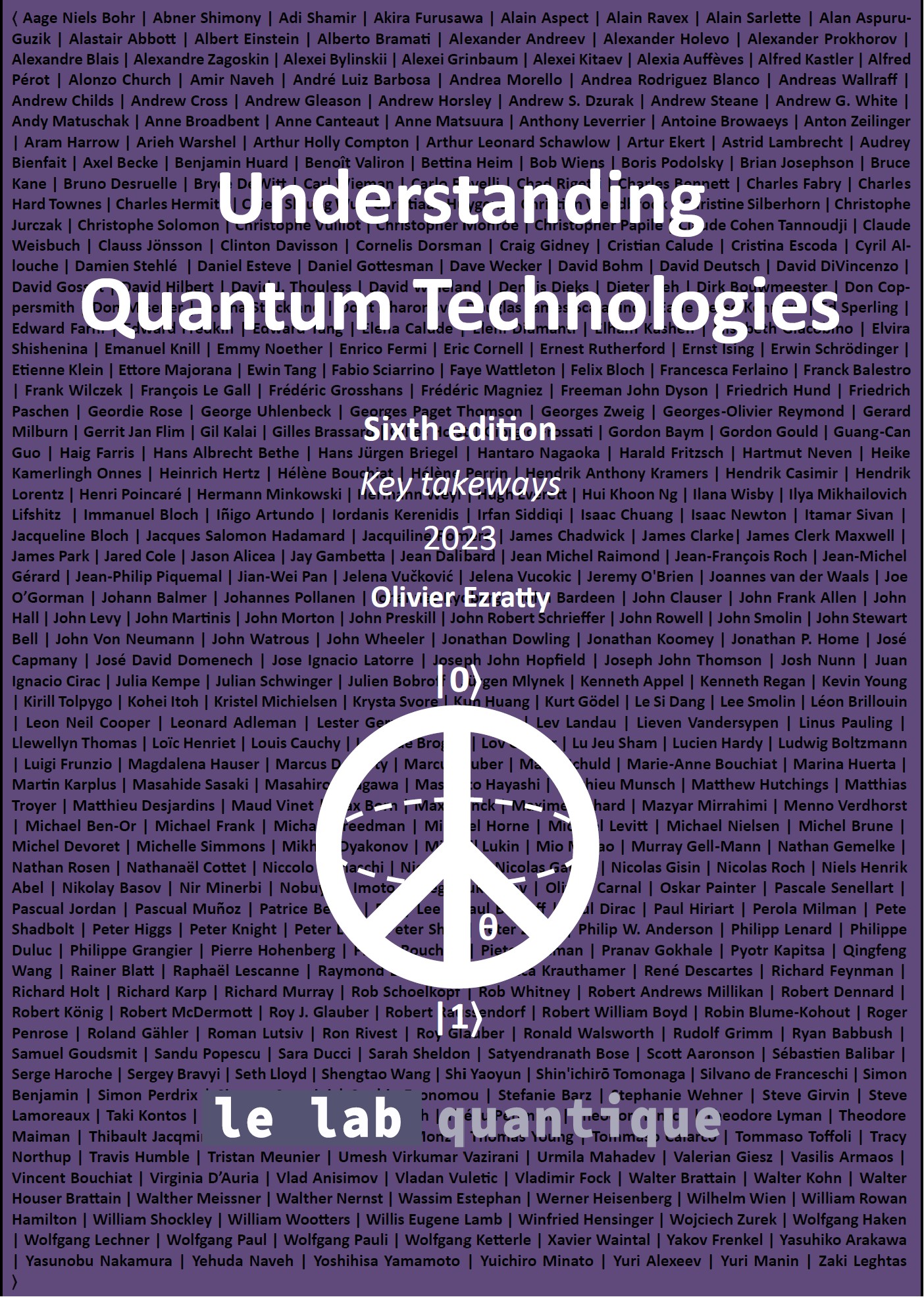
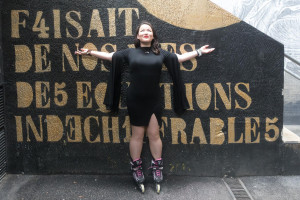
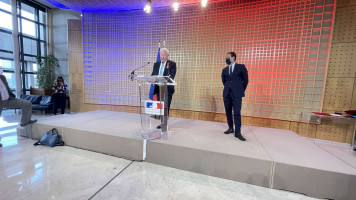
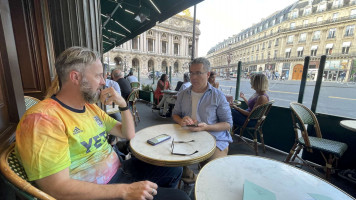
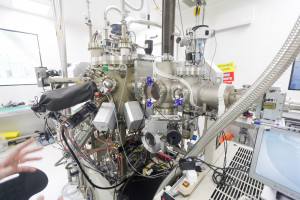
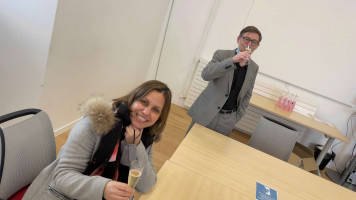

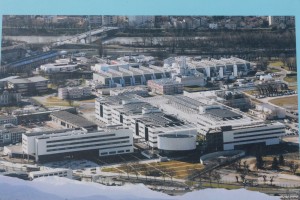

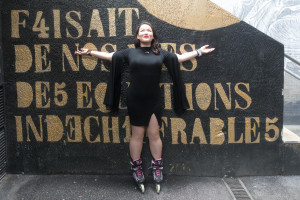
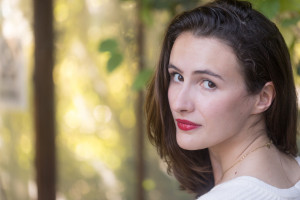
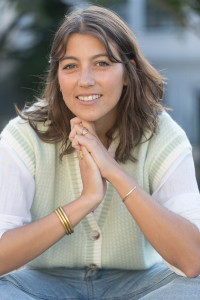
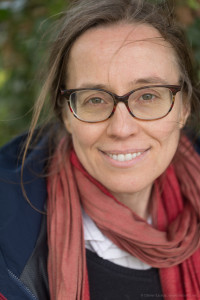

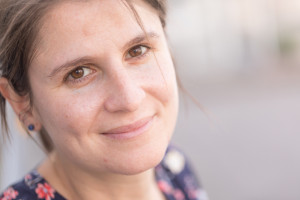
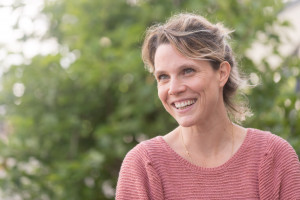
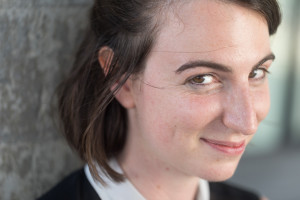
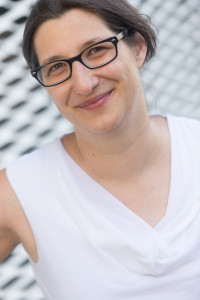
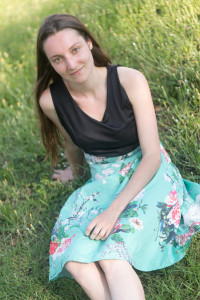
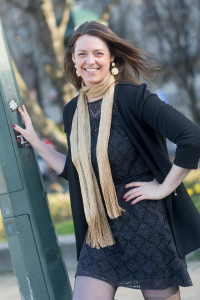
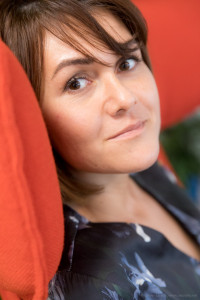
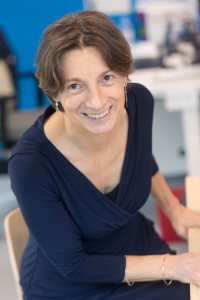
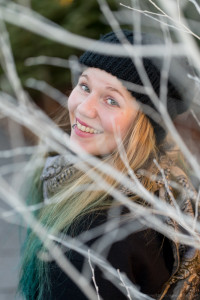

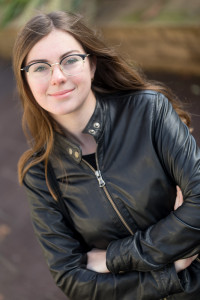
 Articles
Articles
Better than a Harry Potter!
Thanks Olivier ????????????
[…] to Olivier Ezratty, author of Understanding quantum technologies 2023, the challenge for Europe is to position itself outside of where the US and China are likely end up […]